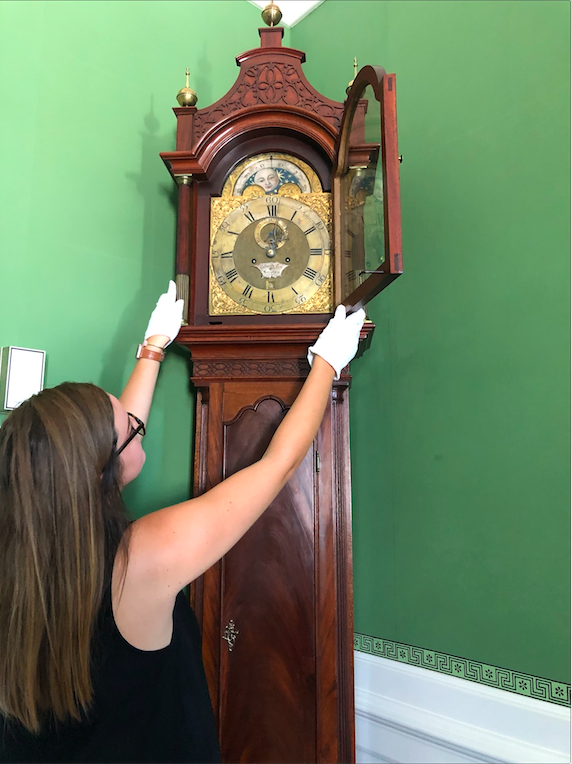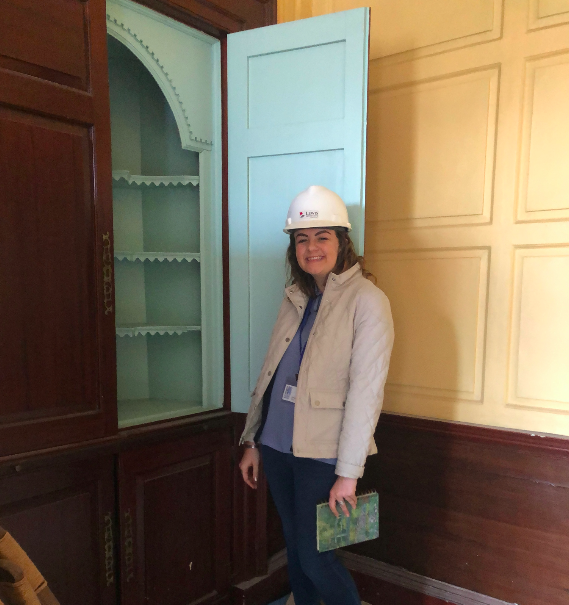Annapolis’s Landscape of Craft: The Roles Enslaved Men and Women Played
by Bethany McGlyn
With support from a Decorative Arts Trust Summer Research Grant, I devoted last summer to research for my Winterthur Program in American Material Culture Masters thesis, “Who Built the City on the Severn? Slavery, Material Culture, and Landscapes of Labor in early Annapolis.” As a former employee at Historic Annapolis and a Dewey Lee Curtis Scholarship recipient for the Trust’s Spring 2019 Symposium in Annapolis, I knew that enslaved artisans labored in Annapolis—just as they did elsewhere in early America—but uncovering the extent to which their skill and expertise shaped the city took a deeper dive into Maryland’s archives, collections, and built environment.
I visited archival repositories, historic structures, and museum collections from Annapolis and Anne Arundel County to Baltimore City and Washington, D.C. While I spent most of my time digging into probate inventories and property records at the Maryland State Archives and the H. Furlong Baldwin Library at the Maryland Historical Society, funding from the Trust allowed me to extend my stay and begin analyzing the objects central to my thesis.
One such object is a tall case clock in the Historic Annapolis collection. This clock, built between 1772 and 1776, is the only known collaboration between cabinetmakers John Shaw and Archibald Chisholm and clockmaker William Faris, three of early Annapolis’s most prolific artisans. Although remembered today as tastemakers and civic leaders, Shaw, Chisholm, and Faris must first be considered as enslavers who altogether held upwards of twenty-five men, women, and children in bondage.
One of these bondpeople, an unidentified silversmith enslaved by Faris, appears only briefly in the historical record. Faris advertised for the sale of this enslaved artisan, who was “by trade a Silversmith, Jeweller and Lapidary,” in November of 1778. Documents like these—fragmented, biased, and incomplete—informed my interpretation of objects like the tall case clock in H.A.’s collection. Bearing William Faris’s touch mark but made before 1778, the clock’s face is just one of several objects likely crafted by the silversmith Faris enslaved. The objects I examined with the support of the Trust began to fill substantial gaps left in the archival record, allowing me to center the lives and skill of several enslaved artisans whose contributions to early American decorative arts, visual arts, and architecture were previously overshadowed by the renown of their enslavers.
My research uncovered enslaved carpenters, blacksmiths, coopers, shipwrights, silversmiths, and cabinetmakers who created luxury objects in urban craft workshops, who were “jobbed out” from plantations on the Eastern Shore, and whose labor made large-scale construction projects like the James Brice House and Maryland State House possible. Little by little, the documents, objects, and spaces that I encountered in Annapolis reveal the constant presence of enslaved artisans and laborers whose exploitation and skill built Maryland’s capital city from the ground up.
Support from the Decorative Arts Trust allowed me the time and space to think deeply, research carefully, confer with experts, and examine the documents, objects, and places central to my thesis.
The Decorative Arts Trusts offers grants and scholarships as part of the Emerging Scholars Program. To support emerging scholars, please consider becoming a member of the Trust.
About The Decorative Arts Trust Bulletin
Formerly known as the "blog,” the Bulletin features new research and scholarship, travelogues, book reviews, and museum and gallery exhibitions. The Bulletin complements The Magazine of the Decorative Arts Trust, our biannual members publication.











Looks like you are going far to enrich the history of black America, to shed new light on the slave experience. Good work!